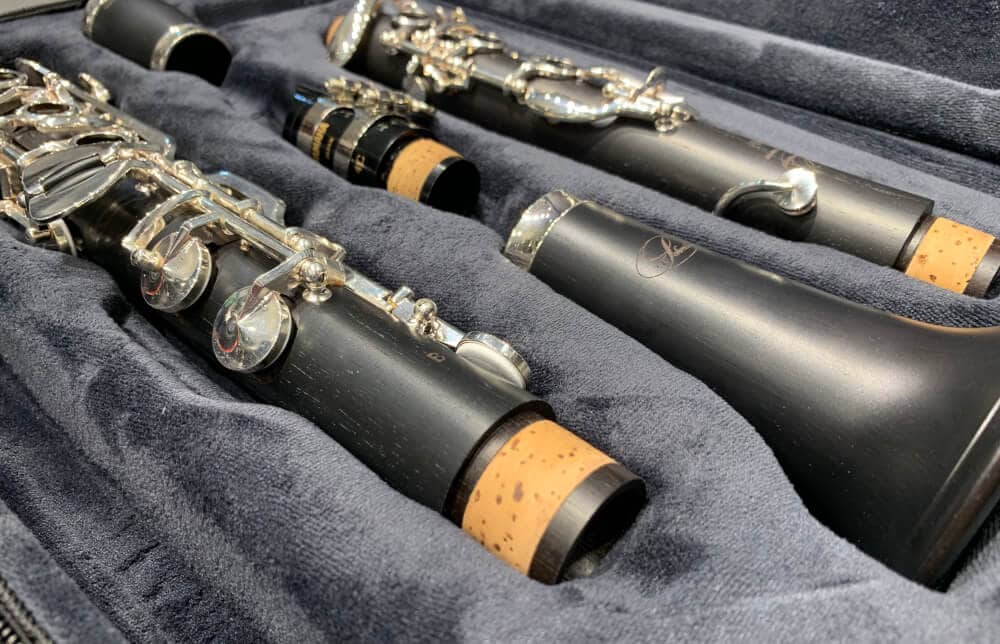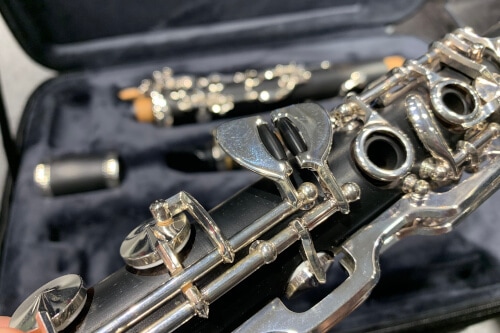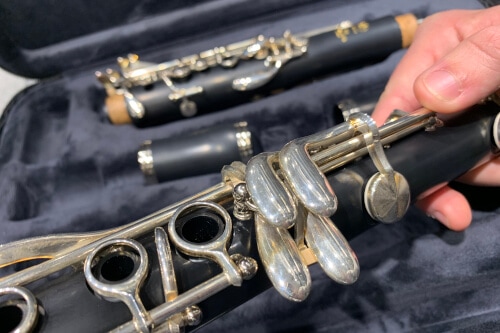Clarinet Basics
What is a clarinet?
The clarinet is an expressive and versatile wind instrument. Due to its assertive tone rich in overtones, the clarinet is very suitable as a solo instrument , but can also be used in classical chamber music or in larger orchestras . The clarinet belongs to the family of woodwind instruments . For many, it is even the worst woodwind instrument. In most cases it is made entirely of dark grenadilla wood . However, this obvious features does not make it a woodwind instrument. Similar to the saxophone, the reed is responsible for this, which is traditionally made of wood and is attached to the clarinet mouthpiece using the leaf screw .
The 5 parts of the clarinet
In addition to the mouthpiece , the clarinet consists of 4 other parts. That would be the barrel , the top and bottom pieces , and the cup . If you put these individual parts together at their pegs, you get a cylindrical bore inside the clarinet - almost along its entire length - and thus a sound chamber with the same diameter. The mouthpiece and the cup have similarities to the saxophone and its conical design . The bore widens here.

The sound generation when playing the clarinet
Another similarity that the clarinet shares with the saxophone can be found in sound generation. Like the saxophone, the clarinet is a transposing musical instrument. This means that the sounding pitch does not correspond to the notated one , or the player has to transpose the notes into the corresponding key themselves. In terms of notation , for example, the clarinet voice differs from the accompanying instruments. The pitch range of the different clarinet models always appears to be the same in the notes, from e to c'''' . Due to the different tunings, B , A , E flat and bass clarinets sound in completely different registers . The pitch range of the clarinet is much larger than other wind instruments and is theoretically unlimited. In practice, however, at some point it just doesn't sound nice anymore. This tonality makes the clarinet one of the most flexible and versatile wind instruments.
Know-how
With us you not only get what you need – we also show you how it works! To the guides.
German or French: The different grip systems and their properties

German system
If you look at the features and ultimately buy a clarinet, you can't avoid choosing the fingering system. You should know that over time two different grip systems have become established. On the one hand we have the traditional German fingering system, which is mainly used in Germany and Austria, and on the other hand the French fingering system, which is more popular internationally. The French variant is also referred to as a Böhm system. The latter was created from a revised and somewhat easier-to-play type of the German fingering system.
The system with the French finger style impresses with a sharp sound rich in overtones, while the German system has more warm characteristics. Since the sound is always perceived subjectively and depends on many other factors such as the player, the reed and the mouthpiece , it is advisable to make your own impression.
French system
In addition to the tonal differences, the two systems can mainly be distinguished by their finger style and their different key constructions, rings and trills. The German system, for example, is equipped with casters / wheels that the little finger can move over. In the French version there are simple levers for the transition. The quantity of main keys is identical in both systems, but can be expanded to include auxiliary and trill keys for special sound connections. The more trills there are on a clarinet, the more alternative handles there are for the clarinetist to play the same note. The rings, on the other hand, ensure that the instrument can be intoned better. The French system is classically equipped with 17 or 18 keys and 6 rings. In the German system, models with 18, 20 or 22 keys are among the common variants, although the quantity of keys can increase to up to 27. In this case one speaks of a Volloehler system. As always, which type of clarinet you ultimately choose depends on the player's personal preferences, abilities and of course the area of use. In our separate buying guide , different types of clarinet, we take a closer look at the different clarinet models.

 Trusted Shops: 4.84/5,00 (10085)
Trusted Shops: 4.84/5,00 (10085)

